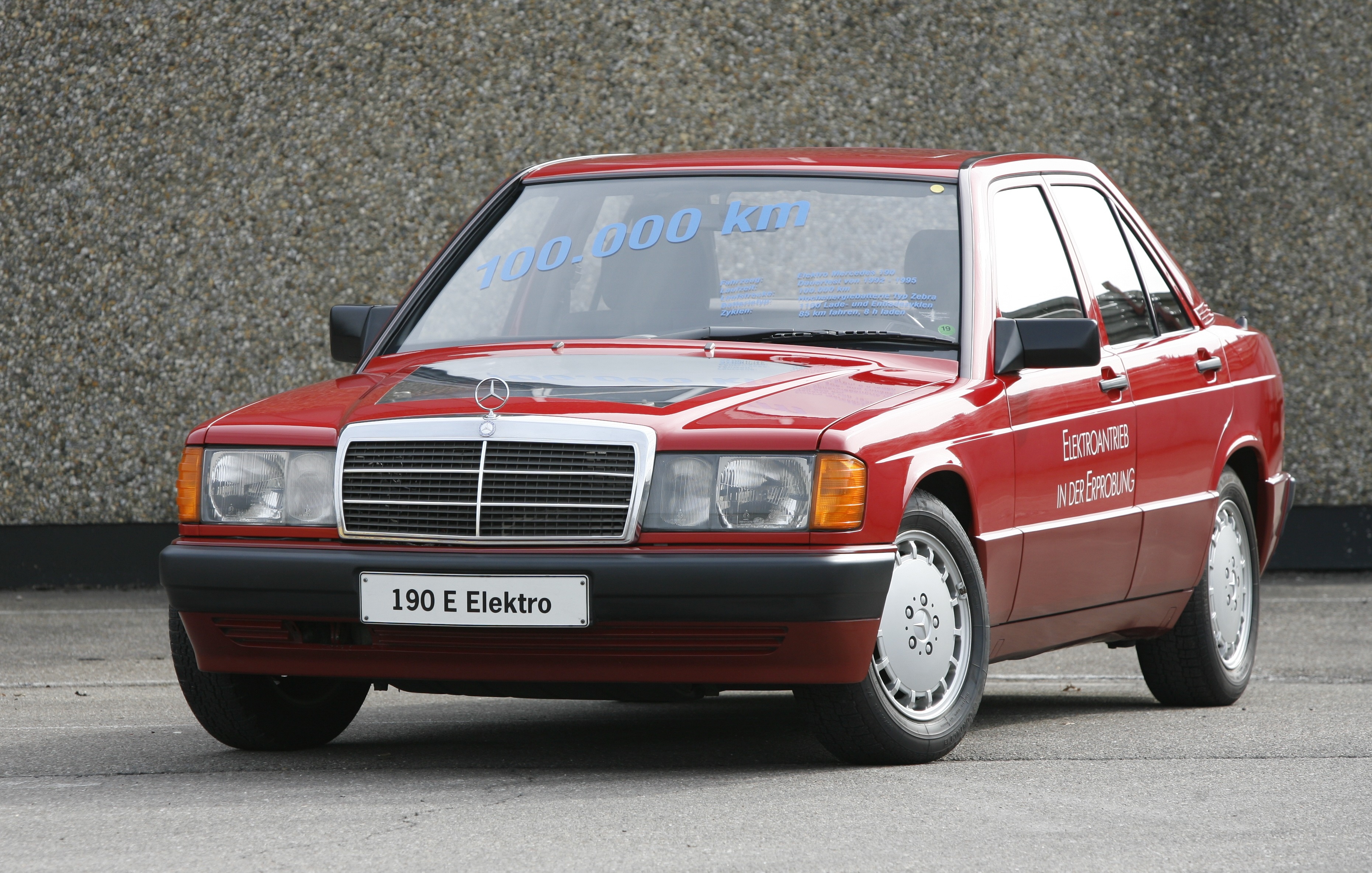Early prototypes | 1990 Mercedes-Benz 190E Elektro
Mercedes-Benz engineers who worked on the 190 Elektro 30 years ago are now helping the German carmaker leapfrog into the future with the EQ electric car wing
 This particular Mercedes-Benz 190E Elektro was driven 1 lakh km around the Rugen island in one year
This particular Mercedes-Benz 190E Elektro was driven 1 lakh km around the Rugen island in one yearIf you think carmakers woke up to the idea of electric mobility only a few years ago, you are certainly mistaken. Yes, EVs have been making headlines only since the past few years, but manufacturers have been exploring the technology for electric mobility since decades. A fascinating story regarding early development of EVs arises from Mercedes-Benz archives, narrating how the German carmaker conducted experiments with electric powertrains way back in 1990.
An electric car based on the Mercedes-Benz W 201 model series, which adapted the C-Class nomenclature after a few years, debuted at the Innovation Market of the Hanover Trade Fair, one of the largest technology exhibitions in Lower Saxony, Germany. According to the press release issued at that time, the Mercedes-Benz 190E Elektro came closest to the requirements of an EV and the main objective was to assess the ‘functional suitability of its components, vibrations, acceleration and temperature fluctuations’ at various operational conditions.
Modern batteries usually comprise of lithium-ion, nickel metal hydride or lead-acid. The electric 190s tested sodium-nickel chloride or sodium-sulphur high-energy batteries, with significantly higher energy density than classic lead batteries. For the 1991 Geneva Motor Show, a more advanced 190 was developed. Visually, the ICE powered W 201 remained unchanged, but each rear wheel was now powered by its own permanent magnet electric motor. Total output was 44hp and the motors derived power from a sodium-nickel chloride battery providing a range of 110km. Another notable aspect is that the Elektro tipped scales at 1400kg, only 200kg more than the standard sedan.
1992 onwards, large-scale field testing was conducted on the German island of Rugen where Mercedes-Benz sent as many as ten electric W 201 series sedans fitted with different electric motor and battery combinations. Special recharging stations using solar energy were available during these field tests. After the tests, various individuals including taxi drivers used these cars on a daily basis. One car even achieved a peak usage rate of 1 lakh km in one year with barely any problems.
'The results provide new insights into battery service life, the number of possible discharge and charge cycles, range, energy consumption and reliability’, summarises the Mercedes-Benz brochure from the early nineties. So, why are EVs becoming popular only now, after three decades? Battery life, range, recycling, charging infrastructure and cost of ownership were some of the challenges stated back then. The same challenges are faced even today, but of course at a different scale given the massive technological advancement and increasing awareness regarding EVs across the globe.
Mercedes-Benz might also have a slight edge in this regard, given that some engineers who worked on the W 201 with electric drive in the nineties are still active in the company’s electric vehicle development and are involved in the latest projects under the EQ electric brand. Three decades down the line, the brand has multiple plug-in hybrids in its global portfolio and there will be atleast 10 long-range EVs by 2022 under the EQ wing.


